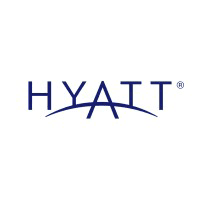
Hilton Garden Inn
How much does Hilton Garden Inn cost?
Initial Investment Range
$21,933,588 to $32,384,982
Franchise Fee
$315,151
You will operate a Hilton Garden Inn hotel under a franchise agreement with us.
Enjoy our partial free risk analysis below
Unlock the full risk analysis to access 9 more categories covering 100+ risks.
Hilton Garden Inn March 30, 2025 FDD Risk Analysis
Free FDD Library AI Analysis Date: July 16, 2025
DISCLAIMER: Not Legal Advice - For Informational Purposes Only. Consult With Qualified Franchise Professionals.
Franchisor Stability Risks
Start HereDisclosure of Franchisor's Financial Instability
Low Risk
Explanation
The audited financial statements in Item 21 show Hilton Franchise Holding LLC (Hilton Franchise Holding) is profitable with substantial positive net worth. There are no signs of financial instability, such as a going concern note. However, the balance sheet indicates a significant reliance on financial arrangements with its parent company, Hilton Worldwide. Overall, the franchisor appears financially sound and capable of supporting the system.
Potential Mitigations
- An accountant should review the audited financial statements, including the notes, to explain the nature of the large inter-company receivables and payables.
- Ask your financial advisor to assess the overall financial health of the public parent company, Hilton Worldwide Holdings Inc. (NYSE: HLT), for a complete picture.
- Your attorney can confirm if any state financial assurance requirements have been triggered, although it appears unlikely here.
High Franchisee Turnover
Low Risk
Explanation
This risk was not identified. FDD Item 20 data for the past three years indicates very low rates of termination and non-renewal relative to the total number of franchised hotels, and the system has experienced steady net growth. This suggests a generally stable and satisfied franchisee base, which is a positive indicator for a prospective owner.
Potential Mitigations
- It is still advisable to contact several current and former franchisees from the lists in Item 20 to discuss their experiences with the system.
- Your attorney can help you formulate insightful questions to ask former franchisees about their reasons for leaving the system.
- A business advisor can help you compare the disclosed turnover rates to available industry benchmarks for large hotel franchise systems.
Rapid System Growth
Low Risk
Explanation
This risk was not identified. While the system is growing, as shown in Item 20, the rate of expansion does not appear excessive for a large, established franchisor like Hilton Franchise Holding. The company has extensive experience and a large infrastructure, suggesting it can adequately support new and existing franchisees without overstretching its resources.
Potential Mitigations
- When speaking with newer franchisees, you should ask about the quality and timeliness of the support they received during their opening process.
- Engage a business advisor to review the franchisor's support structure outlined in Item 11 relative to its projected growth.
- Your accountant can review the financial statements in Item 21 to confirm the franchisor is continuing to invest in support infrastructure.
New/Unproven Franchise System
Low Risk
Explanation
This risk was not identified. The Hilton Garden Inn brand and the Hilton franchise system are mature, well-established, and have a very long operational history with a large number of units. The franchisor and its parent company have extensive experience in both the hotel industry and franchising. The business model is proven and is not considered new or unproven.
Potential Mitigations
- A business advisor can still help you research the brand's current market position and competitive landscape.
- It is important to have your accountant review the franchisor's recent financial performance in Item 21 to ensure continued stability.
- Consulting with your attorney about the terms for such a mature system is crucial, as they are often less negotiable.
Possible Fad Business
Low Risk
Explanation
This risk is not present. The Hilton Garden Inn brand operates in the mainstream upscale hotel sector, which has a long history of sustained consumer demand. This is not a business concept tied to a new or fleeting trend. Its long-term viability is based on established patterns in business and leisure travel, not a fad.
Potential Mitigations
- A business advisor can help you analyze the long-term competitive trends in the upscale hotel market segment.
- It is still wise to have your accountant help you develop financial projections that account for normal economic cycles.
- Your attorney should review the franchise agreement for its full term, as your obligations will continue regardless of shifts in consumer taste.
Inexperienced Management
Low Risk
Explanation
This risk was not identified. FDD Item 2 provides biographies of the franchisor's officers and directors. The management team consists of individuals with extensive, long-term experience in the lodging industry and in managing large-scale franchise systems. There is no indication of inexperienced management.
Potential Mitigations
- A business advisor can still help you research the public reputation and track record of the key executives listed in Item 2.
- It is good practice to ask current franchisees about their direct experiences with the management team's competence and support.
- Your attorney can help you understand the management structure and how it might impact franchisee relations.
Private Equity Ownership
Low Risk
Explanation
This risk was not identified in the FDD. Item 1 indicates the franchisor is part of Hilton Worldwide Holdings Inc., a publicly traded corporation, not a private equity firm. While public companies also focus on shareholder returns, the specific risks associated with a typical private equity ownership model (short-term exit strategies, high leverage) are not present here.
Potential Mitigations
- Your financial advisor should still analyze the parent company's public filings (10-K, 10-Q) to understand its strategic priorities and financial health.
- It is wise to ask your attorney to review the assignment clause in the Franchise Agreement to understand what happens if the system is sold.
- Discuss with existing franchisees whether they have experienced significant changes in fees or support levels in recent years.
Non-Disclosure of Parent Company
Low Risk
Explanation
This risk was not identified. The FDD clearly discloses the parent company, Hilton Domestic Operating Company Inc., and its parent, Hilton Worldwide Holdings Inc. in Item 1. Furthermore, Item 21 contains the audited consolidated financial statements for the franchisor entity itself, Hilton Franchise Holding LLC. There is no indication of a non-disclosed parent or a need for parent financials beyond what is provided.
Potential Mitigations
- It is beneficial to have your accountant review the provided financials and explain the relationship between the franchisor and its parent.
- A business advisor can help you find and review the public financial filings for the ultimate parent company, Hilton Worldwide Holdings Inc. (NYSE: HLT).
- Your attorney can confirm that the disclosures in Item 1 and Item 21 comply with all legal requirements for parent and affiliate reporting.
Predecessor History Issues
Low Risk
Explanation
This risk was not identified. FDD Item 1 clearly outlines the predecessor entities for the Hilton Garden Inn brand, such as Hilton Inns, Inc. and Hilton Garden Inns Franchise LLC. Items 3 and 4 disclose litigation and bankruptcy history for these predecessors where applicable. The lineage and history of the brand appear to be transparently disclosed.
Potential Mitigations
- Your attorney should still review the information on predecessors in Items 1, 3, and 4 to ensure a full understanding of the brand's history.
- You can research the historical performance and reputation of the predecessor entities with the help of a business advisor.
- Asking long-term franchisees about their experiences under any previous ownership can provide valuable context.
Pattern of Litigation
High Risk
Explanation
Item 3 discloses that the franchisor's parent, Hilton Worldwide, is a defendant in several pending class-action lawsuits alleging anticompetitive behavior related to hotel room pricing software. These are serious allegations that could potentially result in significant financial liability or mandated changes to required systems. This litigation history presents a notable risk to the overall system, even if the franchisor entity itself is not the named defendant in all cases.
Potential Mitigations
- Your attorney must review the details of the pending antitrust litigation and explain the potential direct and indirect risks to you.
- Engage your business advisor to research the outcomes of similar antitrust cases in the hotel industry to understand potential ramifications.
- Discuss these lawsuits with the franchisor to understand their position and any contingency plans they may have in place.
Disclosure & Representation Risks
Example Risk: Franchisee Financial Obligations
Blue Risk
Explanation
This risk involves the financial obligations that a franchisee must meet, including initial fees, ongoing royalties, and other required payments. Understanding these obligations is crucial for long-term success.
Potential Mitigations
- Carefully review the Franchise Disclosure Document (FDD) and consult with a franchise attorney to fully understand all financial commitments before signing.
- Conduct regular risk assessments
- Implement monitoring and reporting systems
Unlock Full Risk Analysis
Purchase the complete risk review to see all 102 risks across all 10 categories.
Financial & Fee Risks
Example Risk: Franchisee Financial Obligations
Blue Risk
Explanation
This risk involves the financial obligations that a franchisee must meet, including initial fees, ongoing royalties, and other required payments. Understanding these obligations is crucial for long-term success.
Potential Mitigations
- Carefully review the Franchise Disclosure Document (FDD) and consult with a franchise attorney to fully understand all financial commitments before signing.
- Conduct regular risk assessments
- Implement monitoring and reporting systems
Unlock Full Risk Analysis
Purchase the complete risk review to see all 102 risks across all 10 categories.
Legal & Contract Risks
Example Risk: Franchisee Financial Obligations
Blue Risk
Explanation
This risk involves the financial obligations that a franchisee must meet, including initial fees, ongoing royalties, and other required payments. Understanding these obligations is crucial for long-term success.
Potential Mitigations
- Carefully review the Franchise Disclosure Document (FDD) and consult with a franchise attorney to fully understand all financial commitments before signing.
- Conduct regular risk assessments
- Implement monitoring and reporting systems
Unlock Full Risk Analysis
Purchase the complete risk review to see all 102 risks across all 10 categories.
Territory & Competition Risks
Example Risk: Franchisee Financial Obligations
Blue Risk
Explanation
This risk involves the financial obligations that a franchisee must meet, including initial fees, ongoing royalties, and other required payments. Understanding these obligations is crucial for long-term success.
Potential Mitigations
- Carefully review the Franchise Disclosure Document (FDD) and consult with a franchise attorney to fully understand all financial commitments before signing.
- Conduct regular risk assessments
- Implement monitoring and reporting systems
Unlock Full Risk Analysis
Purchase the complete risk review to see all 102 risks across all 10 categories.
Regulatory & Compliance Risks
Example Risk: Franchisee Financial Obligations
Blue Risk
Explanation
This risk involves the financial obligations that a franchisee must meet, including initial fees, ongoing royalties, and other required payments. Understanding these obligations is crucial for long-term success.
Potential Mitigations
- Carefully review the Franchise Disclosure Document (FDD) and consult with a franchise attorney to fully understand all financial commitments before signing.
- Conduct regular risk assessments
- Implement monitoring and reporting systems
Unlock Full Risk Analysis
Purchase the complete risk review to see all 102 risks across all 10 categories.
Franchisor Support Risks
Example Risk: Franchisee Financial Obligations
Blue Risk
Explanation
This risk involves the financial obligations that a franchisee must meet, including initial fees, ongoing royalties, and other required payments. Understanding these obligations is crucial for long-term success.
Potential Mitigations
- Carefully review the Franchise Disclosure Document (FDD) and consult with a franchise attorney to fully understand all financial commitments before signing.
- Conduct regular risk assessments
- Implement monitoring and reporting systems
Unlock Full Risk Analysis
Purchase the complete risk review to see all 102 risks across all 10 categories.
Operational Control Risks
Example Risk: Franchisee Financial Obligations
Blue Risk
Explanation
This risk involves the financial obligations that a franchisee must meet, including initial fees, ongoing royalties, and other required payments. Understanding these obligations is crucial for long-term success.
Potential Mitigations
- Carefully review the Franchise Disclosure Document (FDD) and consult with a franchise attorney to fully understand all financial commitments before signing.
- Conduct regular risk assessments
- Implement monitoring and reporting systems
Unlock Full Risk Analysis
Purchase the complete risk review to see all 102 risks across all 10 categories.
Term & Exit Risks
Example Risk: Franchisee Financial Obligations
Blue Risk
Explanation
This risk involves the financial obligations that a franchisee must meet, including initial fees, ongoing royalties, and other required payments. Understanding these obligations is crucial for long-term success.
Potential Mitigations
- Carefully review the Franchise Disclosure Document (FDD) and consult with a franchise attorney to fully understand all financial commitments before signing.
- Conduct regular risk assessments
- Implement monitoring and reporting systems
Unlock Full Risk Analysis
Purchase the complete risk review to see all 102 risks across all 10 categories.
Miscellaneous Risks
Example Risk: Franchisee Financial Obligations
Blue Risk
Explanation
This risk involves the financial obligations that a franchisee must meet, including initial fees, ongoing royalties, and other required payments. Understanding these obligations is crucial for long-term success.
Potential Mitigations
- Carefully review the Franchise Disclosure Document (FDD) and consult with a franchise attorney to fully understand all financial commitments before signing.
- Conduct regular risk assessments
- Implement monitoring and reporting systems
Unlock Full Risk Analysis
Purchase the complete risk review to see all 102 risks across all 10 categories.











